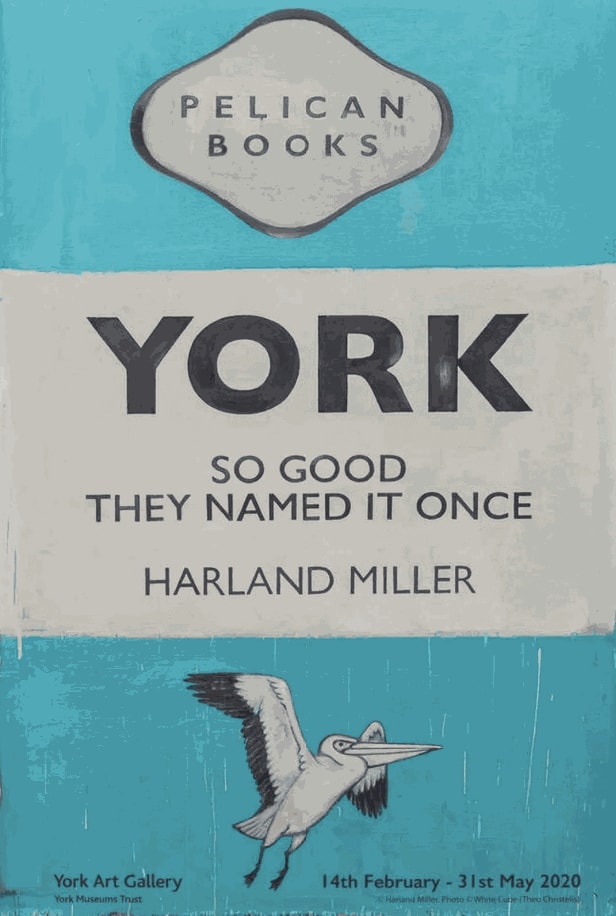British artist Harland Miller’s Penguin Classics paintings have become a classic in themself. Influenced by American artists like Ed Ruscha, Robert Rauschenberg, and Mark Rothko, Miller is now an inspiration himself across a new generation of literary-minded painters and printmakers.
Miller was born in Yorkshire in 1964, beginning his career as a student at Chelsea College of Art in the mid-1980s. After travelling and exhibiting in New York, Berlin, New Orleans, and Paris, the artist established himself as a novelist too, publishing his first two books to critical acclaim in 2000. The following year, Miller translated his love of literature into his artwork, beginning what would become his emblematic Penguin book cover series.

These canvases, appropriating the visual language of classic paperbacks, were first exhibited at the artist’s White Cube debut, To Jean, A Small Memento of a Great Effort, Love Alan in 2002 (as shown above). Miller’s paintings mix the vibrant colours and design of a well-loved dust jacket with a witty fictional title, each using the author name to double as an artist signature. Since this seminal show, several artists have been inspired to use similar imagery for their own satirical artwork.
British artist James McQueen has been working in this vein since at least 2017. His prints and mixed media works have proved popular, synthesising the Penguin aesthetic popularised by Miller with the sardonic symbols of iconic British street artist Banksy. Like Miller, McQueen was inspired by Andy Warhol’s signature elevation of mass produced, quotidian objects, as well as the attractive nostalgia of vintage books.

Interest in Miller’s Penguin paintings has catapulted since 2020, perhaps due to his major solo museum exhibition Harland Miller: York, So Good They Named It Once (shown above) at York Art Gallery at the beginning of that year. Since then, demand and prices for Miller works have grown dramatically, appearing regularly at auction and even achieving a record price of £325,000 at Christie’s London in October 2021. It’s no wonder that this trend of ironic Penguin artworks has soared in the wake of Miller’s elevated profile.
Bristol-born artist Epi has produced prints playing on Miller’s aesthetic since 2021. Epi’s practice also incorporates tongue-in-cheek allusions to street artists like Thierry Noir, Banksy, and Keith Haring, as well as tributes to modern masters like L.S. Lowry, Pablo Picasso and Lucian Freud. Clearly, Harland Miller is in good company in terms of artistic inspirations.
Other artists influenced by Miller’s style include Irish painter R. Scott and British artist duo Charles Hollywood. Even the Connor Brothers, widely known for paintings inspired by pulp fiction covers, have tried their hand at Penguin-inspired prints in recent years.

Lately, Harland Miller has gone beyond this vintage aesthetic for something a bit more retro. Many of his newer paintings look to more recent references, such as self-help books from the 1960s and 70s or the typography and graphic design of the 1980s for example Hell, 2020 (above). Only time will tell how this evolution in Miller’s practice will go on to impact a wider audience of contemporary artists.
For more information and works by Harland Miller, please visit his artist page on Mustard.




